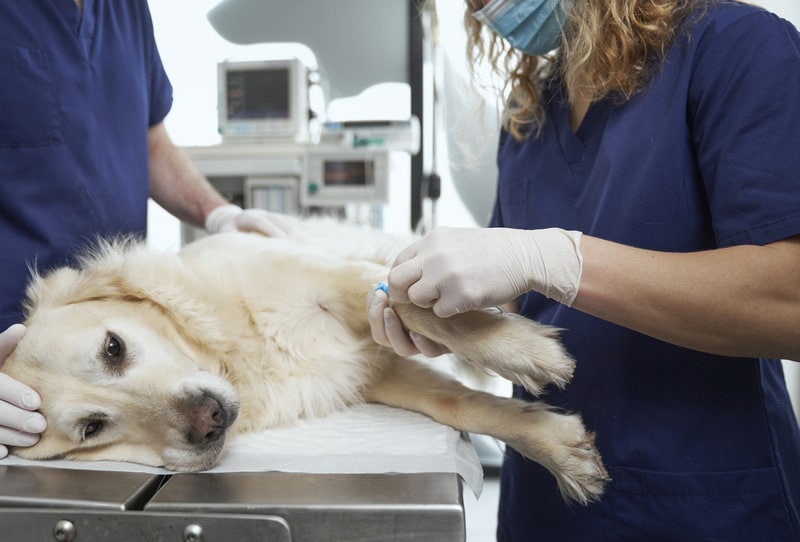Your pup’s irregular eating can result in an upset stomach. It tends to be a passing problem, and within a few hours, your puppy gets fresh. If your Fido is not willing to eat anything, there is something serious to care about – pancreatitis too! So, what is pancreatitis?
Pancreatitis is the inflammation of the pancreas inside the dog’s body. It is a serious disease that can even lead to life-threatening conditions. However, recognizing the symptoms and early warning signs and having the right treatments can definitely save your Fido’s life.
Don’t worry much if you have zero to no information about this disease. In this article, you will get up with many interesting facts and information like the causes, risk factors, the possible signs and symptoms that can help you detect it in your puppy, some diagnostic tests, and the possible treatments.
But before making you acquainted with all the details, I will start by giving you a brief introduction to what exactly pancreatitis is so you can get a clear picture of this unfamiliar term.
What Is Pancreatitis In Dogs?
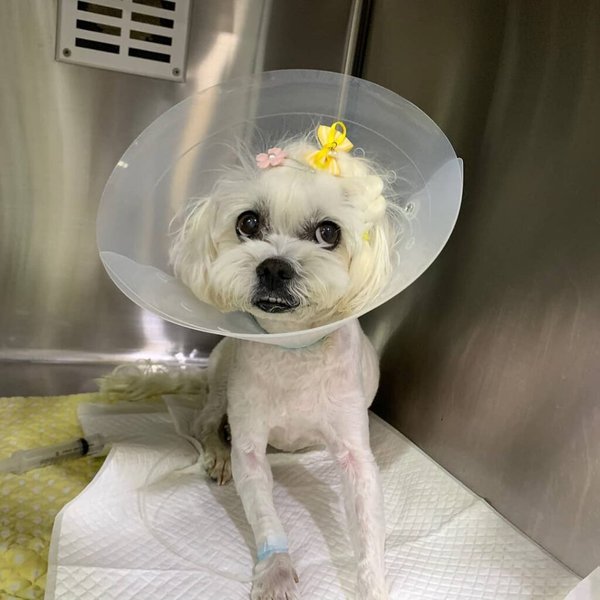
Pancreatitis is a medication term used to describe the condition in which the pancreas becomes inflamed. It’s not like a simple inflammation but instead is much more serious.
But before discussing the disease pancreatitis itself, let’s remove the ‘TITI’ from it and shed light on the organ “pancreas.”
Pancreas
The first part of your canine’s small intestine, the pancreas, is an internal organ nestled up next to the abdomen of dogs and other animals. This organ performs both endocrine and exocrine body functions.
The endocrine functions of the pancreas, specifically in dogs, include:
- Producing insulin
- Releasing glucagon
Both these hormones, whether released in dogs or humans, help to regulate the blood sugar level. The exocrine functions of the pancreas are:
- Secretion of inactive bicarbonates
- Secretion of inactive digestive enzymes
These enzymes are activated only in the small intestine when the food reaches. And if these enzymes remain active, it results in pancreatitis, the topic of our concern today.
Pancreatitis
In such medical conditions, the enzymes are released in the inactivated form. As a result, these enzymes damage the pancreas, tissues, and surrounding organs by causing inflammation and pain, leading to the development of large abscesses.
These activated enzymes can actually eat up the whole organ itself by autodigestion or kill off a part of the pancreas.
To make you understand the severity of this disease, we will discuss two types of Pancreatitis that occur in dogs, although they can’t be differentiated clinically.
Acute Pancreatitis
Acute pancreatitis is temporary and can be recovered completely and fairly quickly when given proper treatment.
But it’s more likely to cause death if not detected quickly. A study showed that dogs with acute pancreatitis have a high mortality rate of 40%.
Chronic Pancreatitis
Chronic pancreatitis is a condition that lasts for weeks to months, resulting in long-term, or, let me say, permanent damage to your puppy’s pancreas.
As a result, even after proper treatment and therapy, the original digestive ability of your pup can’t be restored.
Moreover, dogs with diabetes mellitus are more prone to chronic pancreatitis. According to research, 40% of dogs that develop chronic pancreatitis have diabetes mellitus in them.
What Are The Possible Causes Of Pancreatitis In Your Fido?
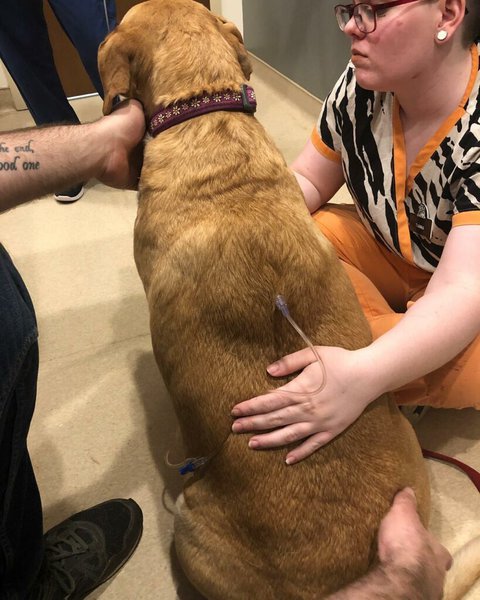
Nearly 90% of the time, the root cause of developing pancreatitis in your pup remains idiopathic. But it is said that dogs that eat a lot of high fat and rich cholesterol meals are at increased risk of developing pancreatitis.
Anything that makes the pancreas angry is the cause of pancreatitis and makes it appear out of the blue. The known causes that lead to pancreatitis in dogs are:
- Dietary indiscretion happens due to the intake of something your puppy’s stomach can’t digest.
- Eating high-fat food frequently.
- Some medicines include atropine, tetracycline, and estrogen.
- High level of calcium in dog blood.
- Severe inflammation in some other organs like the liver or stomach.
- Diabetes mellitus.
- Diseases like hyperadrenocorticism, gastrointestinal tract, hypothyroidism, and epilepsy.
- High level of blood cholesterol.
- The pancreatic duct is obstructed.
- Obese and overweight pups.
Specific Dog Breeds Predisposed To Pancreatitis
It is not necessary that if your dog has any of the characteristics mentioned above, it will definitely have pancreatitis.
Similarly, your Fidos can have pancreatitis even when none of the characteristics just discussed is present in them.
It has been found that some specific breeds of dogs and pooches are more prone to developing pancreatitis than others. Some of these are:
- Cocker Spaniel
- Miniature Schnauzer
- Poodle
For example, the Cocker Spaniels are more prone to autoimmune diseases. As a result, their bodies start to function against themselves, and in the majority of cases, the pancreas is the first one to be attacked.
Similarly, Miniature Schnauzers develop high blood cholesterol levels quickly, which in turn attacks their pancreas as well.
Risk Factors For Developing Pancreatitis
Although all dogs can develop pancreatitis like how humans do, middle-aged dogs and old-aged female Fidos are more susceptible to pancreatitis, leading to thrombus formation or the formation of blood clots.
Moreover, there are high chances of developing pancreatic cancer or entire organ failure if proper treatment is not given to the dogs on time. As a result, the sudden death of your dog can occur. Therefore, it is highly recommended to take your Fido to the vet as soon as possible.
What Are The Signs And Symptoms Of Pancreatitis?
The symptoms of pancreatitis are usually associated with the gastrointestinal tract of your dog’s body. Still, dogs with acute pancreatitis will show different symptoms as compared to dogs with chronic pancreatitis.
To know how severe your Fido’s pancreatitis is, you have to look for some clinical signs and symptoms at first, and if you find them to be present in your pooch, you will eventually need to opt for proper diagnostic tests.
This diagnosis of pancreatitis will be tentative, presumptive, or solely based on the general changes you noticed.
Clinical Signs And Symptoms To Look For
Most of the clinical signs show up in the gastrointestinal tract of your furry buddy, and experience some of the following symptoms:
- Loss of appetite
- Laziness
- Loss of energy
- Motion sickness
- Diarrhea
- Fever
In severe cases, your canine can find it difficult to breathe, internal bleeding can start in any organ, and even the heart can function abnormally.
These are the general symptoms, but how will you differentiate between acute and chronic pancreatitis signs?
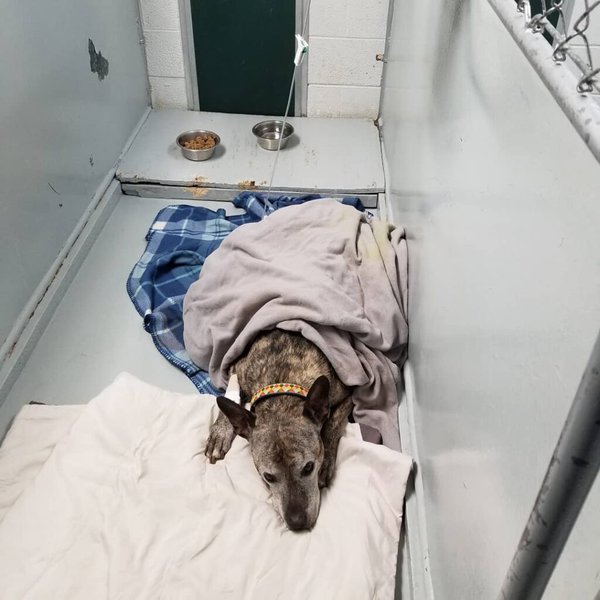
The symptoms that your Fido will develop in case of acute pancreatitis are:
- Severe dehydration
- Persistent vomiting
- Severe abdominal pain
- Anorexia
- Lethargy and fatigue
- Shocks
And in case your pup is suffering from chronic pancreatitis, you will find the appearance of the following symptoms:
- Decreased appetite
- Vomiting
The symptoms don’t appear much in the case of chronic pancreatitis, and that is why chronic pancreatitis is hard to treat because when you detect it, the situation has gone out of your hand. Hence, make it a point to bring your pooch down to the vet for a checkup once every six months!
How Do Your Vet Test For Pancreatitis In Your Fido?
As soon as you take your fluffy to a veterinarian, your pup’s medical history will first be looked at before physical examinations are conducted. It will help the vet get an idea of the problem and the severity of pain your fluff is suffering from.
Possible Ways A Vet Diagnoses Pancreatitis
Once the preliminary examinations are complete, the following are the possible tests a vet will opt for.
Blood Tests
Some blood tests will be performed to examine the activity of the enzymes released by the pancreas. It will provide insights into how well the organs of your pup are functioning.
Abdominal X-Rays (Radiographs)
Abdominal radiographs are performed. These tests can be somewhat helpful in diagnosing pancreatitis, giving an idea of what is going on inside your pooch’s stomach that the human eye cannot see.
Abdominal Ultrasound
This Abdominal ultrasound is specific in diagnosing pancreatitis but doesn’t work if the Inflammation is less than 32%.
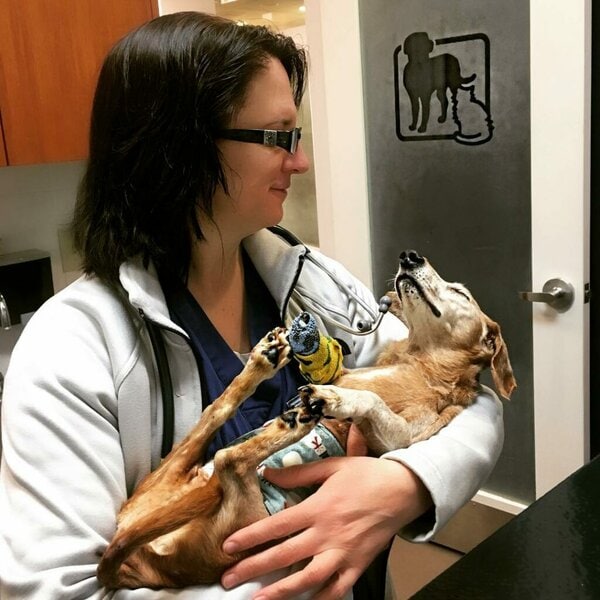
Complete Blood Count And Biochemical Tests
In general, it is an overall body test. Blood count and other tests help find any problem from any of the dog’s body organs.
Urine Tests
Depending upon the condition and reports, the vet would like to go for some urine tests like urine culture and urinalysis to detect pus cells and infection levels.
Canine Pancreatic Lipase Immunoreactivity (cPLI)
The best way to look at pancreatitis is by performing this cPLI test of the enzymatic activity in your furry buddy. The average level is less than 200 ug per liter.
The combination of the tests mentioned above can be used to detect pancreatitis and its severity in your Fido. However, the ultimate way to detect it is to go for a biopsy via laparoscopy.
Can Pancreatitis In Dogs Be Cured?
Yes, pancreatitis can be cured in dogs. The nature of the treatment of pancreatitis and its severity depends on the condition of pancreatitis your little canine is suffering from.
Treatment
In most cases, the fluffy is hospitalized to restore health and hydration. The possible treatments that the vets opt for are any of the following or their combination:
Intravenous Fluids
Intravenous fluid therapy is the first thing to help your pup fight and recover from pancreatitis. It helps to rehydrate your Fido, correct the electrolyte balance, and flush out all the accumulated toxins.
Surgery
There can be an urgent need for surgery to remove all the abscesses, tumors, blocked bile ducts, and cysts in severe cases.
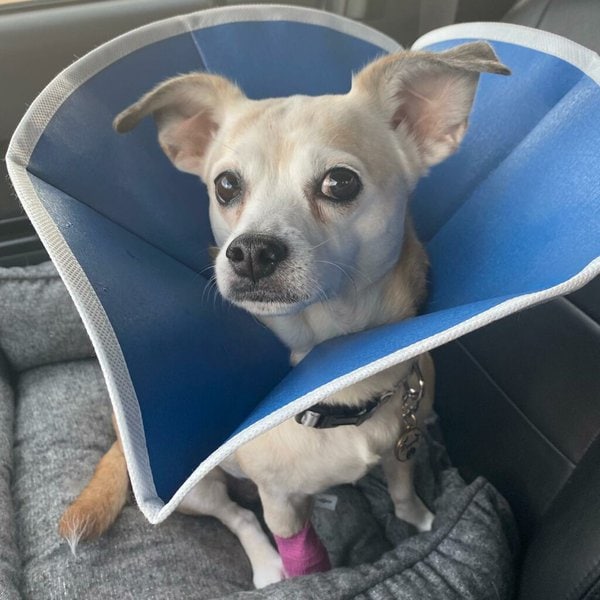
Feeding
The feeding process is of utmost essential, and it affects the bacterial activity of the gut. Usually, it is told to put your canine on fasting for a few days so that the pancreas doesn’t start releasing the enzymes immediately. Moreover, feeding the pup at specific times via a feeding tube is recommended.
Medications
Apart from surgery, the vet can prescribe any of the following medicines depending on the condition and your pooch’s medical history:
- Cerenia for overcoming nausea.
- Some anti-inflammatory medications including steroids.
- Antibiotics to prevent bacterial infections.
- Painkiller for severe abdominal pain.
Can I Treat My Dog’s Pancreatitis At Home?
No, you shouldn’t. You certainly don’t have time to wait and test home treatments and remedies on your pup to see if its health gets better or not.
Pancreatitis is a potentially life-threatening illness, so you can’t afford to take risks. You should immediately take your fluffy to a good veterinary clinic and get it treated properly.
After treatment, you can look for home remedies as an order of prevention only, such as controlling the dog’s diet, giving water and medication, etc.
Recovery Time
Recovery time depends on how severe your Fido’s pancreatitis is. In mild to moderate cases, 2 to 4 days of treatment in the hospital is enough, and the healing process continues for almost 1 to 2 weeks.
But if your Fido is suffering from severe pancreatitis, it can take 1 to 2 weeks to be fully discharged from the hospital.
Preventions To Take
Pancreatitis is a fatal disease, and therefore you should try your maximum to take all the prevention and measures possible.
Here are the measures or steps to take in order to minimize the chances of your pooch encountering pancreatitis:
- Avoid high-fat food or fatty food.
- Increase the physical activity of your Fido.
- Don’t let your furry buddy become overweight or obese.
- Provide food that has guaranteed prebiotics and prebiotics for intestinal health.
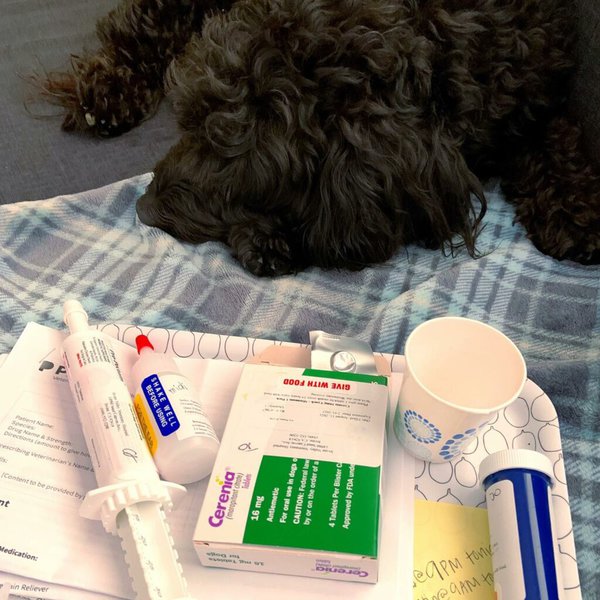
Prognosis For Pancreatitis
The prognosis for your pup with pancreatitis depends entirely upon the severity level your Fido had.
If your canine has extremely severe pancreatitis, it is at a high risk of dying. There will be Inflammation in the whole body which can result in multiple organ failures.
The chances of fatality also increase if your pooch is found to have abscesses in the pancreas. It will lead to a condition where fewer digestive enzymes will be produced than those required by the body.
In addition, there are chances of scarring of pancreatic tissues, even if your pooch has recovered from acute pancreatitis.
What And What Not To Feed A Dog With Pancreatitis?
Ideally, the dog with pancreatitis should intake easily digestible food. For this, offer a meal with a moderate amount of protein and a low level of fats.
Once done with the treatment process, the next phase of recovery depends entirely on how much you take care of your Fido. And when discussing this, the most difficult part is to find the right food plan for your pup that can make its angry stomach happy.
So, here are some details of some foods, and diet plans along with the nutritional content that will help you in making the meal for your puppy.
Prescription Diets
There is no second thought that prescription diets are the best option, designed explicitly for pups with acute or chronic pancreatitis. Your vet will also recommend you one of the prescription diets, for example:
- Blue Buffalo Life Protection Formula
- solid gold – Fit & Fabulous Grain-Free
List Of Foods Allowed To Feed Your Dog Recovering From Pancreatitis
Once your Fido’s pancreatitis recovery has started, you can slowly add protein sources to the dog’s diet. However, make sure to cook all the food evenly and avoid giving raw, uncooked food.
The protein-containing sources are skinless chicken pieces, especially breast, low-fat cottage cheese, and boiled meat.
Moreover, boiled rice is a good option as they are highly digestible. Fish and sweet potatoes are also typically good sources of protein and contain low-fat content.
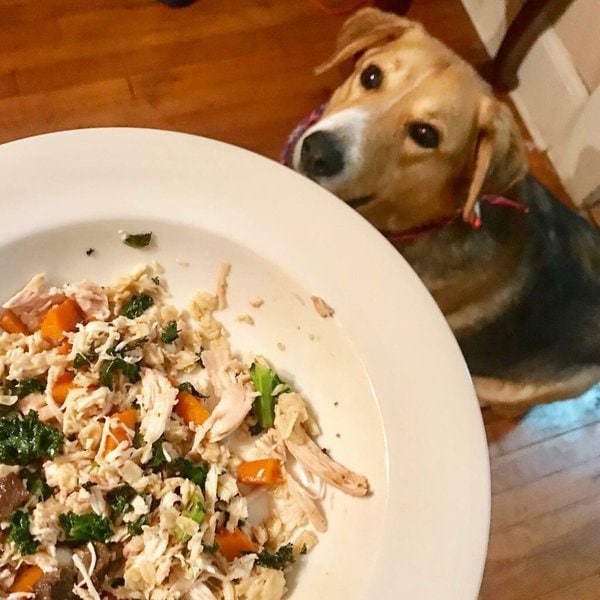
Nutritional Content
You should be more concerned with the fact that only the right amount of nutrition has to enter your pup’s body without adding load to the pancreas. It means that the meal should have less fat, carbohydrates, sugar, and proteins so that it can be digested easily.
An ideal checklist of nutrition required for your pup should contain low fat, no sugar, low carbs, and moderate proteins.
Moreover, supplements like fish body oils are known to improve the condition of pancreatitis in your pooch by lowering the level of cholesterol in the blood. The most effective fish body oils are EPA oil and salmon oil.
Food To Avoid Giving Dogs With Pancreatitis
When discussing an ideal diet for your canine recovering from pancreatitis, it is equally important to discuss the food to avoid.
So, if your furry buddy has pancreatitis, avoid giving it food rich in fats because fatty foods are harder to digest, resulting in high cortisol in the body.
For example, scrambled eggs are not recommended as they contain butter and milk.
Moreover, sugary foods should be avoided as much as possible, and items that are low in protein content, such as canned foods and kibbles, are also applicable.
Do Canines With Pancreatitis Drink A Lot Of Water?
Yes, it has been noticed that a dog who has developed pancreatitis drinks much more water than normal but soon vomits it after drinking.
Excessive Thirst Due To Dehydration
Due to excessive vomiting and diarrhea, the chances are that Fido’s body is experiencing an extent of dehydration. Hence, your pooch will feel thirsty.
And if it has diabetes, it will aggravate the situation because already, in that scenario, your pooch kidney will be utilizing a big portion of available water in the absorption of body glucose.
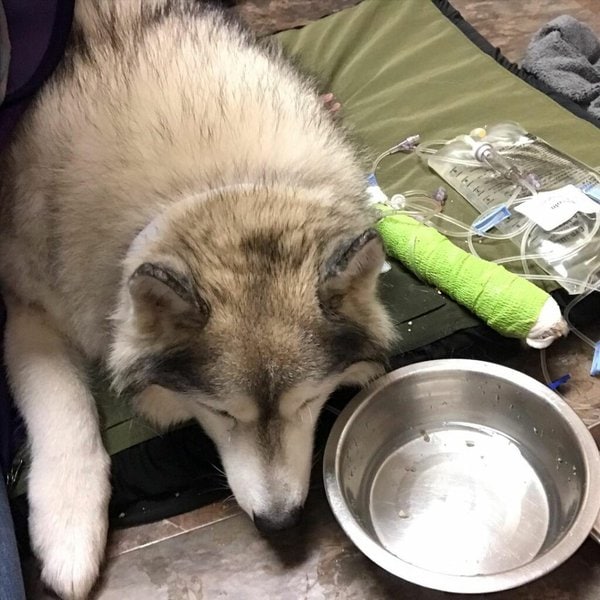
Greater Consumption Of Water
If your canine is suffering from pancreatitis, the normal or regular recommended water intake will not be sufficient as a lot more water is going to be consumed by the body because:
- In pancreatitis, your Fido can experience a high fever, which consumes and absorbs more water.
- Other metabolic issues also occur, like kidney disease, which requires more water to balance the metabolites.
- More frequent vomiting results in further loss of watery fluid from the body.
Increase Fluid Intake
You should continue feeding your pup water simply or with a syringe to insert fluid and prevent excessive dehydration. Since dehydration worsens the situation of pancreatitis, adding some amount of Pedialyte in water is highly recommended.
Moreover, lactated ringers are an exceptionally good fluid that corrects dehydration and water losses caused by vomiting in your Fido during pancreatitis.
How To Comfort A Dog With Pancreatitis?
When talking about comforting your dog when it is having a flare-up, it is essential and challenging at the same time as you can’t do much except for some precautions to take.
Here are a few things that you can do to comfort your fluffy dog.
Nothing By Mouth (NPO)
The first thing to go for is not giving anything to your pup during the 24 hours of an attack of pancreatitis.
It will help to decrease inflammation and pain, as there will be no workload at all on the pancreas. As a result, there will be no release of digestive enzymes, providing a proper rest period to the angry pancreas.
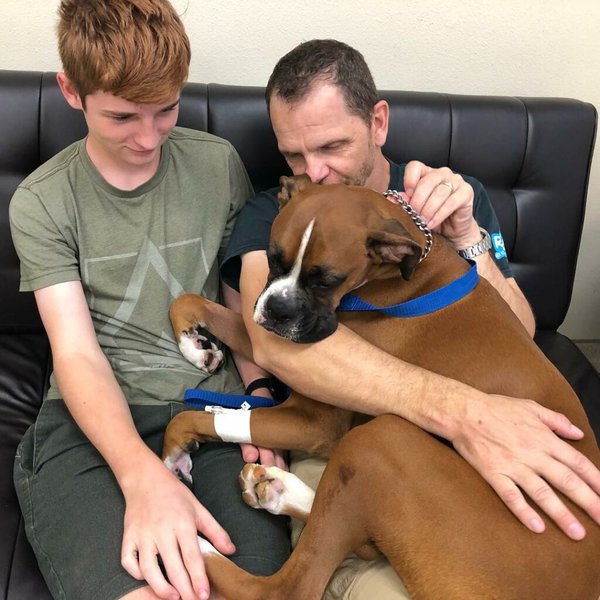
Give Less To Eat, But More Often
You need to be very specific about the timing and size of the meal. You can’t just put a load on the pancreas as it will cause inflammation to recur. Instead, what you can go for is feeding your pooch more often, like after every two to three hours.
Yes, giving small meals 4 to 5 times a day is better than providing big meals twice a day, which may place stress on the sensitive pancreas of your Fido.
Pamper Them
You can pamper your furry buddy to make it feel comfortable. Giving your pooch extra attention and letting it stay with you throughout the day is what you can do.
You can also ease its feeding by bringing its bowls closer or taking it out to the bathroom yourself if it is feeling too low to walk. These all are ways to pamper your little canine and make it know how much you love your pup!
Comfort And Rest
You can also buy puppy pads, or even diapers, for your pup. No matter how well your Fido is potty trained, there are high chances of meeting with a potty accident during such a lethargic period. So, consider purchasing them to avoid a nasty mess.
The last thing you can do is make sure your furry buddy does a proper rest and doesn’t get involved in running or any other such activity, which can make it feel tired.

